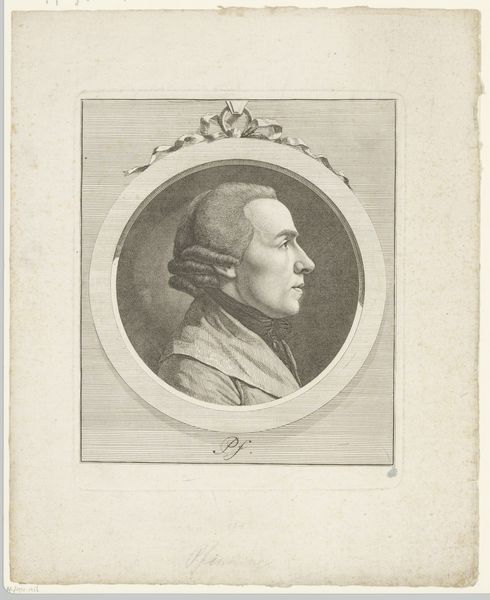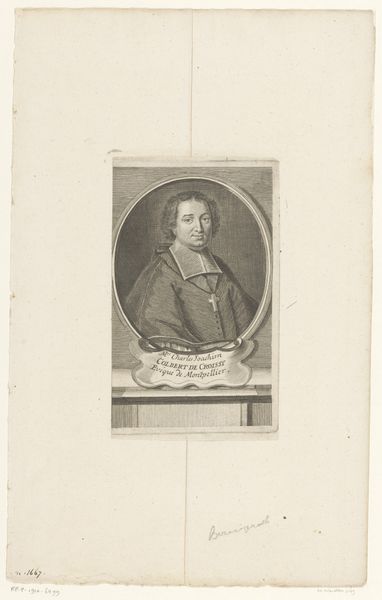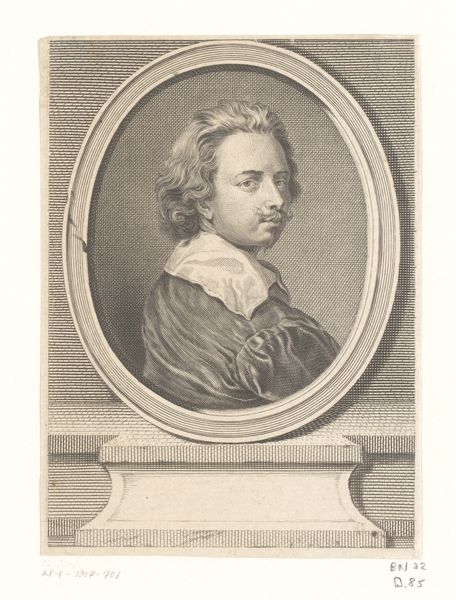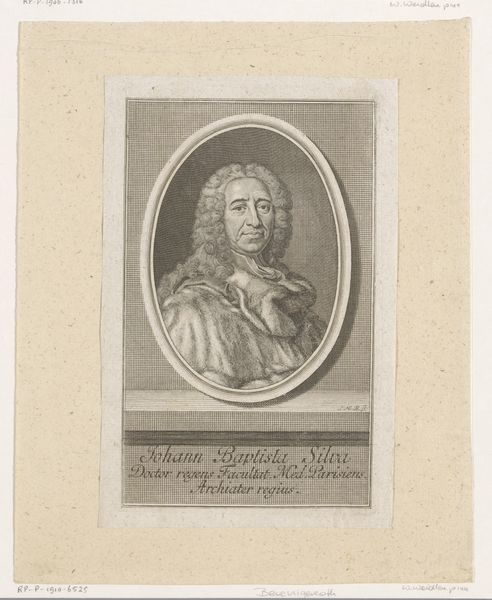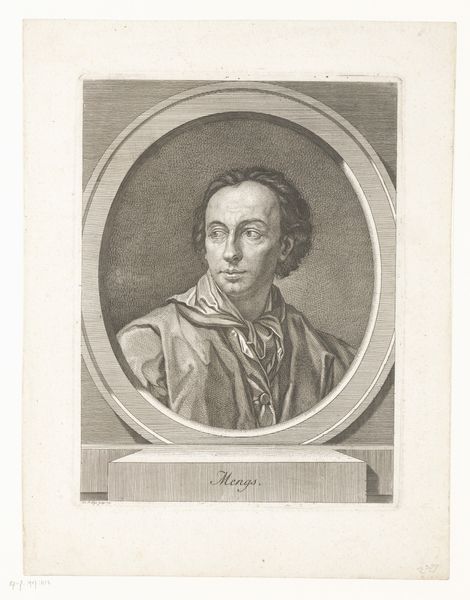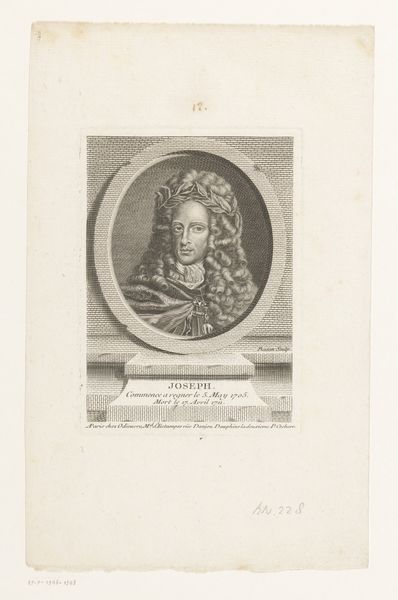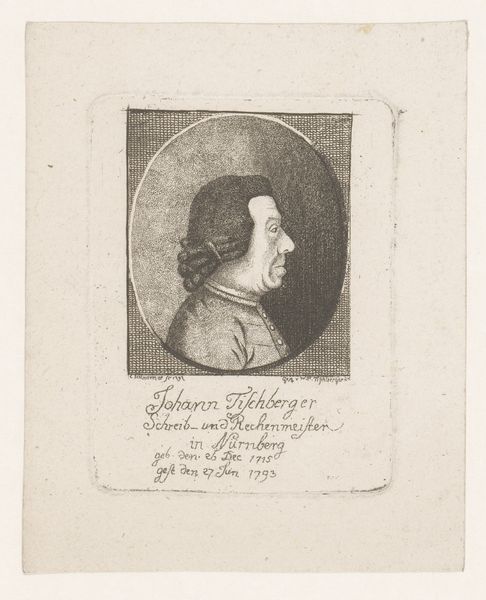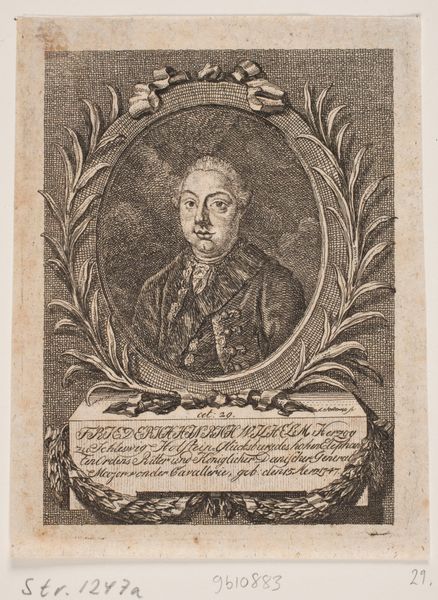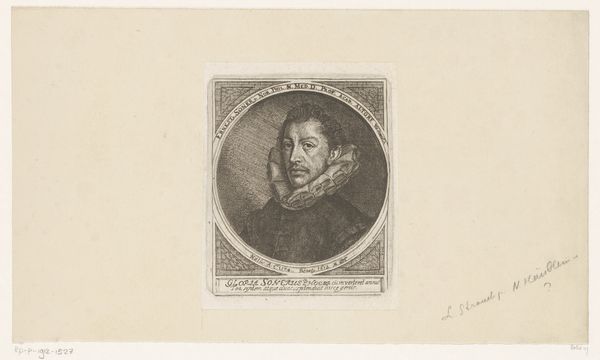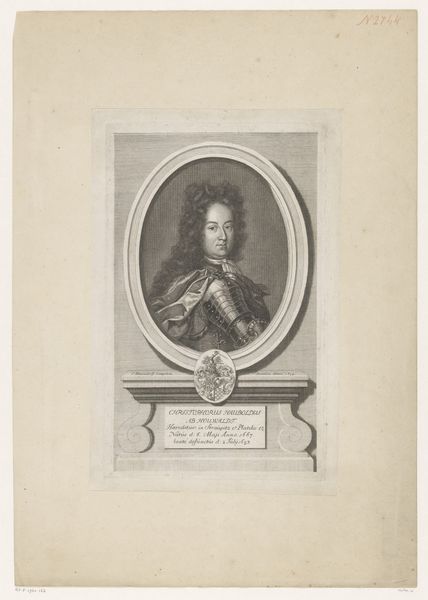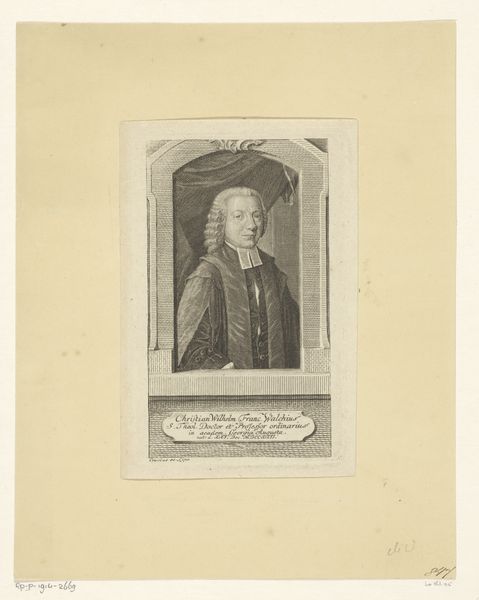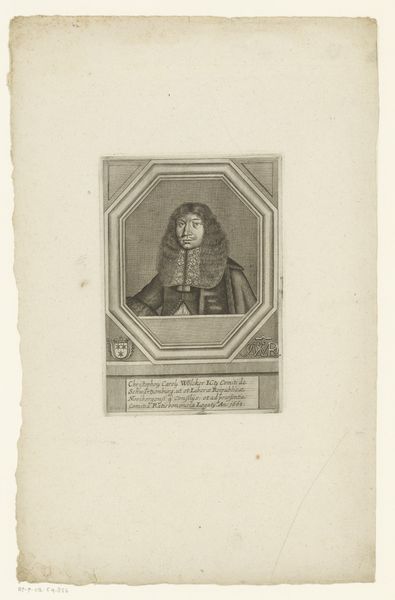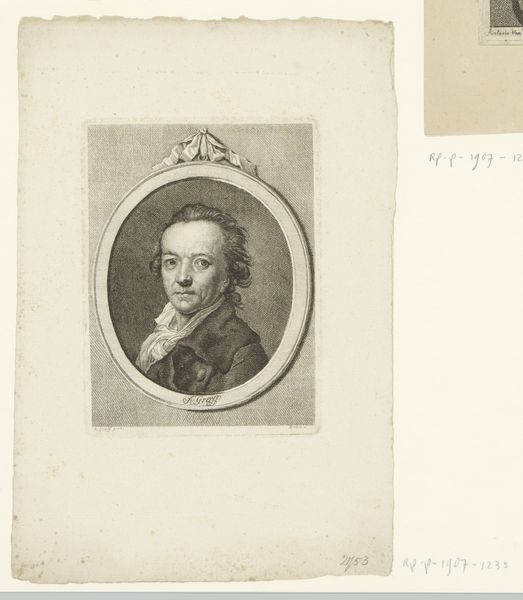
drawing, print, engraving
#
portrait
#
drawing
#
neoclacissism
# print
#
engraving
Dimensions: height 204 mm, width 181 mm
Copyright: Rijks Museum: Open Domain
Curator: Today, we are looking at “Portret van Johann Heinrich Lips,” an engraving that comes to us from sometime between 1768 and 1817. It is currently held in the collection of the Rijksmuseum. Editor: My immediate impression is its quiet formality. The precise lines and smooth shading create a serene yet reserved mood. The neoclassical frame also adds to the overall sense of refined stillness. Curator: Indeed, this artwork's existence speaks to the engraver’s labor and the cultural value placed on portraiture during this period. Engravings like these democratized image production, making portraits more accessible. The image served to elevate the sitter through careful manipulation of line and tone, a skill that required extensive training and material investment, underscoring the commercial relationships involved. Editor: Speaking formally, I am drawn to how the circular frame guides the eye directly to Lips' face. The composition’s geometry – circle within rectangle – emphasizes the subject’s profile. The meticulous detail in the rendering of his hair and clothing showcases incredible artistic skill. The engraving relies on visual language that connects him to refinement and nobility. Curator: The widespread availability of portrait engravings also signals a new type of relationship with individual identity. Reproducing the image through engraving involved workshop economies. Consumption wasn't limited to wealthy elite alone and became connected with emerging middle-class status aspirations, driving the demand and transforming printmaking and distribution networks across Europe. Editor: What you bring up about production interests me – particularly how it differs so greatly from painting – even though there are moments of overlap in visual qualities. Considering the engraving technique allows an examination of how a single drawing is carefully copied across diverse impressions; each sharing core consistencies, yet bearing nuanced variation on the surface. These copies and iterations, and Lips' role, underscore something important about representation and replication that cannot be easily addressed by paintings or unique artworks. Curator: Looking at this work makes me ponder the relationship between Lips and the craftsman that day; their negotiation of visibility, circulation, production, and consumption. Editor: And I see how carefully considered formal structures grant this work its captivating presence.
Comments
No comments
Be the first to comment and join the conversation on the ultimate creative platform.
